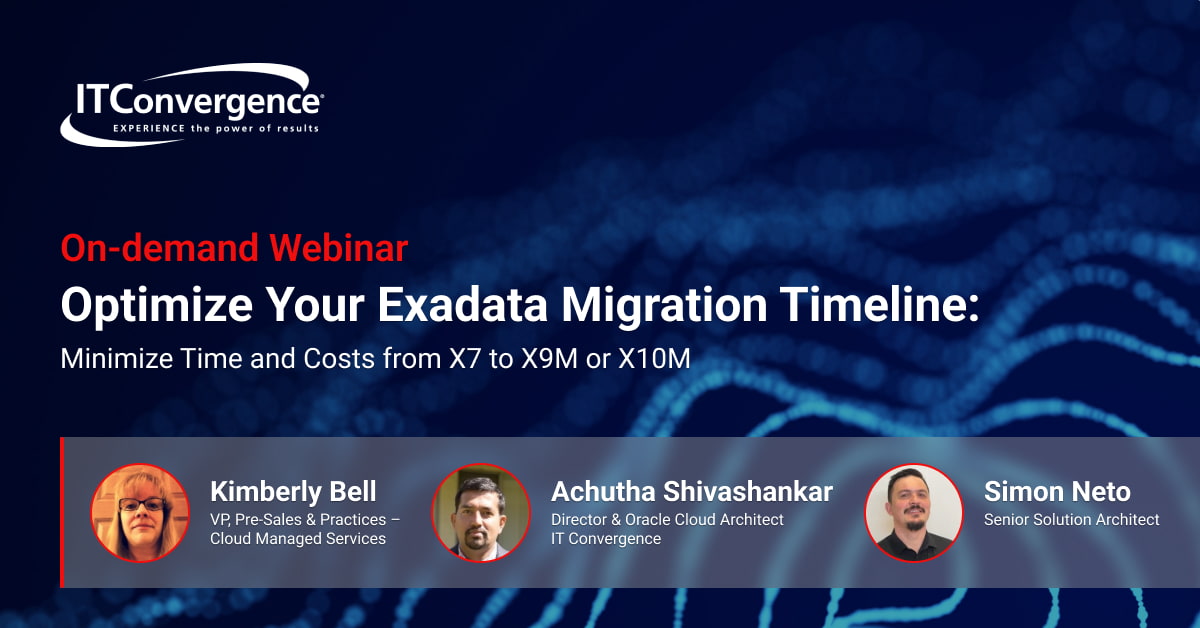In today’s dynamic business landscape, enterprises are continuously seeking ways to enhance their data management capabilities, improve performance, and reduce operational costs.
Oracle Exadata, renowned for its exceptional performance and scalability, has emerged as a leading solution for achieving these goals. However, migrating to Exadata is a significant undertaking that requires careful planning, execution, and optimization.
This article serves as a comprehensive guide to mastering migrations, ensuring successful outcomes and reaping the benefits of Exadata.
Oracle Exadata is a purpose-built database machine that integrates hardware, software, and networking components into a single, optimized solution. It offers a range of benefits, including high performance, reduced maintenance efforts, improved scalability, and enhanced security. Before embarking on a migration journey, it’s essential to understand how Exadata aligns with your organization’s goals and IT infrastructure.
Key Steps in a Successful Exadata Migration
Assessment and Planning
A thorough assessment of your existing environment is crucial to understanding the scope and complexity of the migration. This involves identifying applications, databases, dependencies, and performance requirements. A comprehensive migration plan should outline timelines, resource allocation, and potential challenges.
Design and Configuration
The design phase involves defining the Exadata architecture that best suits your workload. This includes hardware specifications, storage configurations, network setups, and backup strategies. Each aspect should align with your organization’s performance, availability, and scalability needs.
Data Migration
Migrating data from the legacy system to Exadata requires careful consideration. Data extraction, transformation, and loading (ETL) processes must be meticulously planned to minimize downtime and ensure data integrity.
Application Testing
Rigorous testing is essential to ensure that applications function seamlessly in the new Exadata environment. Load testing, performance benchmarking, and functional testing should be carried out to identify and rectify any issues before going live.
Go-Live and Monitoring
As you transition to Exadata, a well-defined go-live plan ensures a smooth switch from the old environment to the new. Post-migration monitoring is critical to identifying performance bottlenecks, tuning configurations, and ensuring optimal resource utilization.
Best Practices for a Seamless Exadata Migration
Engage Experts
Collaborate with experienced professionals who have expertise in Exadata migrations. Their insights and guidance can significantly impact the success of your migration project.
Plan for Downtime
While minimizing downtime is a priority, it’s important to plan for a maintenance window during the migration process. This allows for thorough testing and adjustments if needed.
Data Validation
Implement robust data validation mechanisms to ensure data consistency and accuracy post-migration.
Backup and Recovery
Maintain comprehensive backup and recovery strategies to safeguard against any unforeseen challenges during migration.
Performance Tuning
Leverage Exadata’s performance-enhancing features post-migration, such as Smart Scan and in-memory processing, to optimize database performance.
Mastering Exadata migrations is a journey that requires meticulous planning, execution, and ongoing optimization.
By understanding the benefits of Exadata, meticulously following a well-defined migration plan, and adhering to best practices, enterprises can successfully transition to this powerful platform. A successful Exadata migration not only enhances database performance and scalability but also positions organizations for growth, innovation, and a competitive edge in the digital age.





